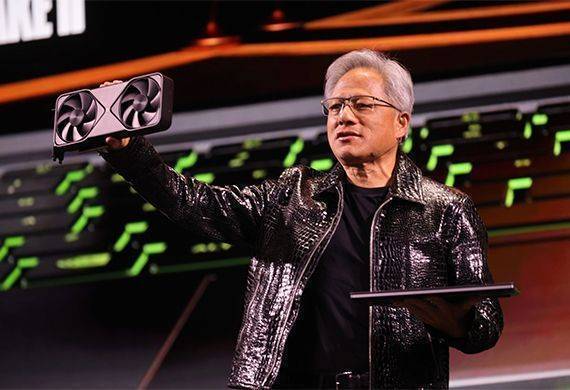How NVIDIA and Jensen Huang Are Leading the Global AI Revolution
By Jaipriya K S, Content Writer, Global Leaders Insights

Under the visionary leadership of Jensen Huang, NVIDIA CEO, NVIDIA has become a global leader in the world and future of AI. NVIDIA started by focusing on graphics processing and has advanced into a top company leading the way in both AI supercomputers and graphics technology. In 1993, Huang founded NVIDIA with the goal of designing GPUs for creating better video games.
AlexNet, created in 2012 using NVIDIA’s GeForce GTX 580 computer, was the key moment that launched the modern era of AI since it performed remarkably in image recognition. Because of this achievement, NVIDIA was able to integrate AI deeply, with OpenAI being one example. Jensen Huang, NVIDIA’s CEO, entered a partnership with OpenAI by personally delivering the very first DGX AI supercomputer which made it possible to create ChatGPT. Currently, large language models, robotics and self-driving cars rely heavily on NVIDIA’s AI supercomputers, for example the DGX H100.
Led by visionary Jensen Huang, CEO of NVIDIA, the company is reshaping AI by building cutting-edge GPUs, developing supercomputers and designing personalized AI tools. NVIDIA is ensuring that AI is both available and impacts the world of technology, education, creativity and workplaces. As a result of RTX 50 Series and Project Digits, NVIDIA is helping AI reach more people daily.
Thanks to Huang’s acknowledgment of how AI could evolve, NVIDIA’s GPUs now make a huge difference in technology like new drugs and models of the climate. Currently, NVIDIA controls more than 70 percent of the market in AI and graphics and its influence remains solid, with a valuation of over $3 trillion.
Key Highlights
- NVIDIA’s RTX 50 Series and Project Digits help creators, students and professionals access affordable AI supercomputing power on their desktops.
- Jensen Huang’s leadership has made it much easier for education, healthcare and design fields to adopt AI through NVIDIA’s accessible AI tools and GPUs.
- NVIDIA’s partnership with OpenAI made companies able to train models like ChatGPT and reinforce NVIDIA’s role in AI infrastructure.
- NVIDIA is shaping a future where AI empowers human potential, unleashing their capabilities to enable personalized learning, smart workflows and faster achievements at work.
The GeForce RTX 50 Series: AI-Powered Graphics Redefining Possibilities
At CES 2025, the GeForce RTX 50 Series made its debut and set new standards for AI graphics cards. Huang points out that these GPUs are similar to supercomputers and excel at gaming, designing and creative tasks. It has become unique for providing AI technology that uses DLSS 4 to form high-quality images using AI to calculate only 500,000 out of the 8 million pixels on a 4K screen. The new RTX 5070 and RTX 5090 in the RTX 50 Series can give you similar performance to the RTX 4090 for only a fraction of the cost—at the beginning, the price is $549. Because technology has been democratized, gamers, designers and fans of AI can now use the best tools without spending a lot. RTX 50 Series improves the teamwork between AI and graphics by joining shaders and neural networks, enabling both makers of stunning visuals and those building AI models to do their best work.
AI as a Personalized Tutor: Empowering Students and Professionals
Huang is strongly in favor of using AI tutor to help people learn more in education. He believes AI in Education will be like a private tutor that helps bridge the gap to knowledge, making it simpler and more popular to learn. According to Huang, the understanding of almost any field has become easier, because of ChatGPT, Gemini and Grok by our side, doing more than a computer could. In 2025, being able to use AI prompting well is similar to being able to ask questions that accurately capture the topic, just as Huang describes true artist’s work.
Aiming to help AI in education, there can be benefits for professionals from a range of areas too. No matter if you’re a lawyer, doctor, chemist or biologist, Huang suggests thinking about how AI can help you succeed at your job. In the same way, professionals can perform more important work after AI automates repetitive tasks, as the RTX 50 Series does for pixel rendering. More than 70 percent of job skills will likely shift as a result of AI, so it is important for us to start using them now to compete.
Superhuman Potential with AI: A Future of Empowerment
Huang believes that AI should help people rather than replace them. “We will grow to be ‘superhumans’ as a result of super AI, much like working with masters in their disciplines,” he says. Thanks to tools like NVIDIA’s Project Digits, a $3,000 AI supercomputer, students, engineers and researchers can now use advanced computing. While you could build a petaflop-level AI performance with the $250,000 DGX systems, Project Digits delivers the same power on desktops at a lower cost, allowing users to build custom models or their own R2-D2. Because it is both affordable and accessible, AI is encouraging creativity and progress across all kinds of sectors.
AI gives artists in the creative arts the ability to design virtual environments, add 3D items and build convincing digital human characters, as can be seen in NVIDIA’s cooperation with Adobe and Shutterstock. AI tutors assist in education with personal advice and in sectors such as health and transport, it is used to manage big problems such as finding drugs and driving without human supervision. Huang believes clearly that AI will empower the next generation to work on large tasks like updating digital biology, material sciences and robotics.
Why Every Student Should Learn AI in 2025
Huang’s advice to students is forthright: start learning AI right away. The first generation learned how to use computers and now today’s generation must get good at AI to achieve better productivity and creativity. Being skilled at AI prompt engineering, so AI works to the maximum capacity, is essential in 2025. Huang uses ChatGPT and Perplexity AI every day at work to show how they can help researchers. If students learn to use AI, they when have a better advantage whether in science, law or the arts.
Anyone can easily start using ChatGPT and type in, “I don’t know how to use ChatGPT, explain to me.” The ability to use AI with so little training, along with NVIDIA’s cost-effective AI supercomputers, ensures it is accessible to everyone, helping with all kinds of challenges in life.
NVIDIA and OpenAI: A Partnership Shaping the Future
Working with OpenAI shows how important NVIDIA is to the development of AI. The delivery of the first DGX supercomputer to OpenAI in 2016, by Elon Musk, made it possible to train ChatGPT and similar models. Now, the newest H100 GPUs from NVIDIA power OpenAI’s research and around half of Fortune 100 companies are adopting DGX systems for AI. As a result of this AI partnership, NVIDIA demonstrates that together, AI and graphic processing can fuel progress for various industries.
Also Read: Forging Resilient Strategic Partnerships for Sustainable Growth
A Superhuman Future Awaits
According to Jensen Huang, AI should be seen as something that will empower, become available to many and transform our lives. Project Digits and the GeForce RTX 50 Series from NVIDIA are making it possible for students, professionals and creators to use superhuman intelligence. Using AI as a personal tutor and an improvement tool, individuals can make new advances, spend time on essential tasks and continue to improve ideas. As Huang aptly puts it, AI will make us feel “empowered and confident”; foreshowing a future where technology supports human potential across every field.
.jpg)



